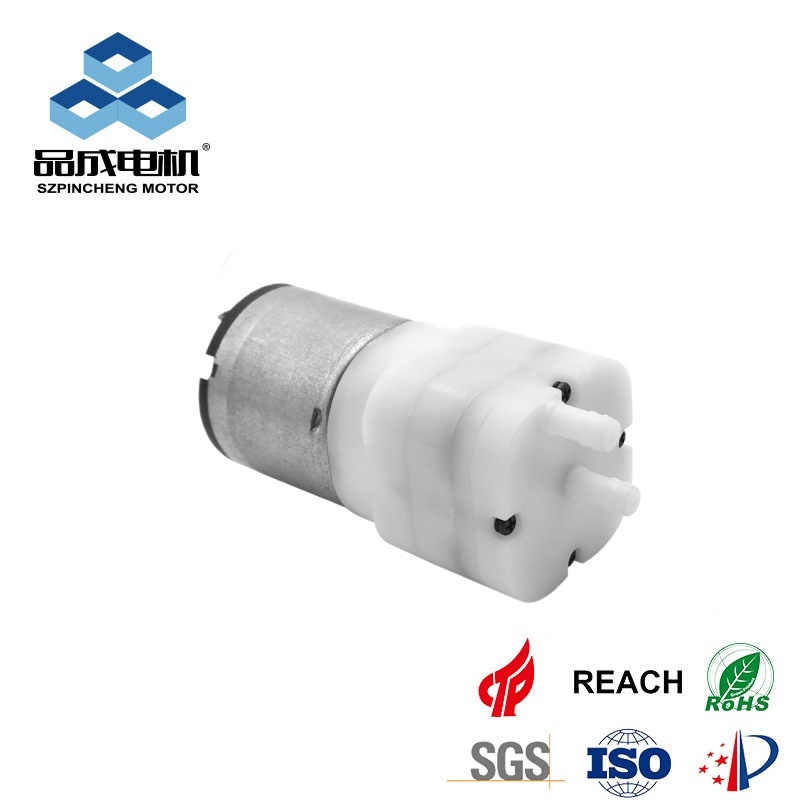The mini vacuum pump is a critical component in countless applications, from portable medical devices to advanced laboratory equipment. Its compact size and high efficiency make it indispensable. However, like any precision instrument, a micro vacuum pump can occasionally fail to perform as expected. Understanding the common failure modes and having a systematic troubleshooting process is vital for minimizing downtime. If you find your micro electric vacuum pump or mini diaphragm vacuum pump struggling, this guide will walk you through the potential causes, from simple power issues to complex mechanical failures. We will focus on common models like the 370 micro vacuum pump and the small vacuum pump 12v, and highlight why choosing a reliable manufacturer like Pincheng Motor is the best preventative measure against the frustrating scenario of when micro vacuum pump not working.
The Two Main Failure Categories
When a small vacuum suction pump stops working, the problem generally falls into one of two categories: electrical failure (the pump motor is not running) or mechanical failure (the pump motor is running but not pulling a vacuum).
Category 1: Electrical Failure (Pump Not Running)
This is often the easiest to diagnose and fix.
1.Power Supply Issues: The most common cause. Ensure the power source matches the pump's voltage requirement. A micro vacuum pump 3v will not run on a 12V supply (and may be damaged), and a mini vacuum pump 12v will not run efficiently, if at all, on a 3V supply. Check the battery level or power adapter output.
2.Wiring and Connections: Inspect the wiring for loose connections, breaks, or corrosion. A simple loose wire can prevent the micro dc vacuum pump from receiving power.
3.Motor Failure: If the power supply is correct and connected, but the motor remains silent, the motor itself may have failed. This can be due to worn brushes (in brushed motors) or an internal short circuit.
Category 2: Mechanical Failure (Pump Running but No Vacuum)
This category is more complex and usually indicates a problem within the pump head assembly.
1. Seal Degradation: The diaphragm is the heart of the pump. Over time, especially in a mini diaphragm vacuum pump, the diaphragm can harden, crack, or lose its flexibility, leading to a loss of seal and a failure to create a pressure differential.
2.Valve Malfunction: The one-way valves (inlet and outlet) must open and close perfectly with each stroke. If a valve is stuck open (due to debris or damage), the air will simply flow back and forth, and the tiny vacuum pump price you paid will be wasted on a non-functional unit.
3. Clogging: Debris, moisture, or particulate matter drawn into the pump can clog the inlet, outlet, or the internal valves, severely restricting flow and vacuum performance.
Systematic Troubleshooting Steps
Follow these steps to systematically diagnose why your mini vacuum pump is not working.
Step 1: Verify Power and Motor Function
- Check Voltage: Use a multimeter to confirm the voltage at the pump terminals matches the required voltage (e.g., 3V for a micro vacuum pump 3v).
- Listen for the Motor: If the motor is running, proceed to Step 2. If it is not, check the wiring and power source. If the wiring is good, the motor is likely the issue.
Step 2: Inspect for Leaks
- System Integrity: The pump can only pull a vacuum if the entire system is sealed. Check all tubing, connectors, and the pump head casing for leaks. Even a pinhole leak can prevent a small vacuum pump from achieving its ultimate vacuum.
- Pump Head Seal: If the pump is running but not pulling, a leak in the pump head seal (diaphragm or valves) is highly probable.
Step 3: Check for Obstructions
- Inlet/Outlet: Disconnect the tubing and visually inspect the inlet and outlet ports for any blockages.
- Internal Clogging: If the pump has been used to draw in moist air or fine particles, the internal valves may be clogged. This requires disassembly and cleaning, which should only be attempted if you have the technical expertise.
Prevention is the Best Cure: Choosing Reliability
The best way to avoid the scenario of when micro vacuum pump not working is to invest in a high-quality, reliable unit from the start. While the tiny vacuum pump price might be tempting for generic models, the long-term cost of failure, maintenance, and replacement far outweighs the initial savings.
Pincheng Motor’s commitment to quality is your guarantee of reliability. We understand that a pump's performance is not just about its initial specifications but its ability to maintain those specifications over its lifespan.
- Superior Component Quality: We use high-grade, long-life diaphragms and precision-engineered valves that resist wear and tear, drastically reducing the risk of mechanical failure common in generic mini diaphragm vacuum pump models.
- Precision Manufacturing: Our tight manufacturing tolerances ensure perfect sealing and alignment, which is the foundation of a reliable micro quiet vacuum pump.
- Optimized for Longevity: Whether it's a small vacuum pump 12v or a micro vacuum pump 3v, our motors are designed for continuous duty, minimizing the risk of premature motor failure.
By choosing a Pincheng micro dc vacuum pump, you are not just buying a component; you are buying peace of mind. Our pumps are engineered to run reliably, ensuring that your product maintains its performance and reputation, eliminating the need for constant troubleshooting.
Conclusion
The failure of a mini vacuum pump can be traced back to a handful of common issues, most of which are preventable. By following a systematic troubleshooting process, you can quickly identify and resolve most problems. However, the ultimate solution to avoiding the question of when micro vacuum pump not working is to partner with a manufacturer that prioritizes quality and reliability above all else. Choose Pincheng Motor for your small vacuum suction pump needs, and invest in a solution that is built to last.
you like also all
Post time: Nov-13-2025




